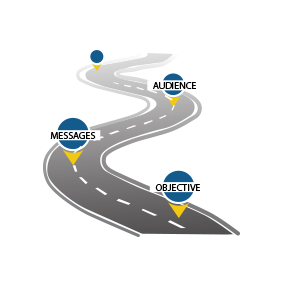I feel so anxious before I talk, what can I do? Once I stand up, I forget what I planned to say.
FIRST, prepare yourself before you speak.
One time I was scuba diving in very big waves. When I jumped off the boat under the water, I heard a loud swishing sound in my ears. I started to panic thinking the regulator was broken—but then I realized that sound was myself, hyperventilating. I had not paid attention that I was hyperventilating before jumping in the water. It took me at least 15 minutes under the water to calm down. I promised myself that the next time I went scuba diving, I would be sure I was calm before I jumped in the water.
 Don’t do like I did and jump in the water before you are calm and relaxed. Instead, prepare yourself to speak with a breathing technique you find useful. Practice this type of breathing as you await your turn to talk. Do your breathing technique when you are walking to a meeting. You don’t have to be sitting in a quiet place. Think you can find a better relaxation technique than breathing? Listen to Dr. Andrew Weil: “The single most effective relaxation technique I know is conscious regulation of breath.”
Don’t do like I did and jump in the water before you are calm and relaxed. Instead, prepare yourself to speak with a breathing technique you find useful. Practice this type of breathing as you await your turn to talk. Do your breathing technique when you are walking to a meeting. You don’t have to be sitting in a quiet place. Think you can find a better relaxation technique than breathing? Listen to Dr. Andrew Weil: “The single most effective relaxation technique I know is conscious regulation of breath.”
 SECOND, practice diaphragm breathing:
SECOND, practice diaphragm breathing:
 Don’t do like I did and jump in the water before you are calm and relaxed. Instead, prepare yourself to speak with a breathing technique you find useful. Practice this type of breathing as you await your turn to talk. Do your breathing technique when you are walking to a meeting. You don’t have to be sitting in a quiet place. Think you can find a better relaxation technique than breathing? Listen to Dr. Andrew Weil: “The single most effective relaxation technique I know is conscious regulation of breath.”
Don’t do like I did and jump in the water before you are calm and relaxed. Instead, prepare yourself to speak with a breathing technique you find useful. Practice this type of breathing as you await your turn to talk. Do your breathing technique when you are walking to a meeting. You don’t have to be sitting in a quiet place. Think you can find a better relaxation technique than breathing? Listen to Dr. Andrew Weil: “The single most effective relaxation technique I know is conscious regulation of breath.”
 SECOND, practice diaphragm breathing:
SECOND, practice diaphragm breathing:
- If alone, put a hand on your chest and a hand on your stomach.
- Inhale through your nose for a couple of seconds. You don’t have to make noise. Feel your stomach expand with your hand.
- Exhale through your mouth. Feel your stomach go in. (If alone purse your lips a bit like sipping on a straw.)
- Article – Breathing Basics: The How And The Why
- Article – 3 Reasons Everyone Should Try Alternate Nostril Breathing MY FAVORITE!!!
- Apps – Best Deep Breathing Apps (4 to choose from)





